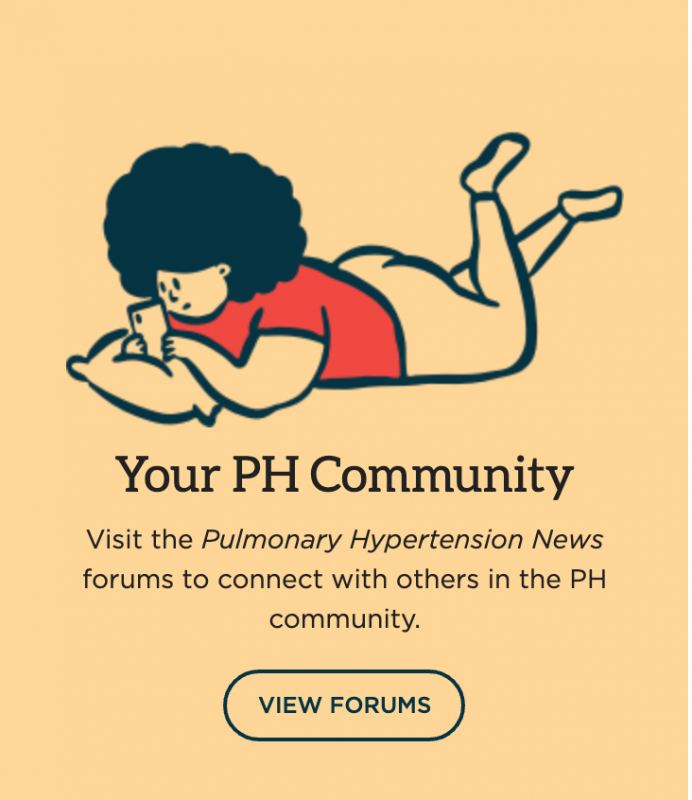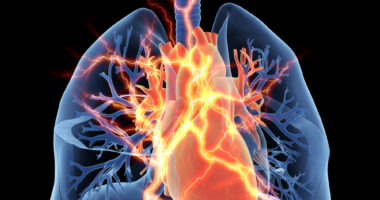Using 4-drug combination therapy adds up to healing in PAH
Case of man, 68, highlights importance of personalized treatment

A 68-year-old man with severe pulmonary arterial hypertension, or PAH — high blood pressure in the lungs — and multiple coexisting conditions saw considerable improvements after being given combination therapy with four different medications, a case study from the U.S. reports.
Gains were seen in blood flow measures, the function of the heart’s right ventricle, which pumps blood to the lungs, and functional status.
“This case illustrates the real-world application of PAH guidelines and emerging therapies, highlighting the importance of individualized treatment based on patient characteristics and disease severity,” the researchers wrote, noting that people with PAH may have other coexisting conditions that affect the heart and lungs.
In such cases, diagnosis and treatment require a multidisciplinary strategy, according to the researchers.
For this man, “initiation of quadruple therapy with monitoring was key to the remarkable improvement in symptoms and objective parameters” he experienced, the team wrote. “This case highlights the evolving management of PAH and the importance of rapid diagnosis.”
The report, “Winning With Four: Hemodynamic and Symptomatic Improvement of Pulmonary Arterial Hypertension With Contemporary Quadruple Therapy,” was published in JACC: Case Reports.
For most PAH cases, current guidelines recommend combining different therapies that lower blood pressure in the lungs, managing coexisting conditions, and monitoring patients closely.
Man had history of PAH plus other coexisting conditions
Here, a team at MetroHealth Hospital in Cleveland described the case of a Black man with PAH and coexisting conditions who saw rapid improvements following a tailored combination therapy.
The man’s medical history included hypertension, chronic obstructive pulmonary disease — known as COPD, it’s an inflammatory lung condition — and high levels of lipids (fats) in his blood. He was admitted to the cardiac critical care unit because his heart’s right ventricle was not pumping enough blood, a condition known as cardiogenic shock. He had sought treatment for severe fatigue and shortness of breath.
Ten months prior, the man had been diagnosed with a heart rhythm condition and severe dysfunction of his heart’s ventricles. Additionally, imaging found extensive damage to his lungs. He was discharged home with a treatment regimen that included medications for heart failure, alterations in heart rate, and COPD.
At this admission, tests revealed high levels of brain natriuretic peptide (BNP), a biomarker of heart failure, and severely elevated pulmonary artery systolic pressure (PASP), meaning elevated blood pressure in the pulmonary arteries. The findings also were consistent with severe right heart failure, low cardiac output — how much blood the heart pumps per minute — and cardiogenic shock.
The patient was now treated with intravenous, or into-the-vein, treprostinil (sold as Remodulin; generics also available) along with inotrope, a medication to enhance heart contractions. Sildenafil (sold as Revatio; generic medications available) and ambrisentan (sold as Letairis; generics also available) were then added.
The combination therapy eased pulmonary vascular resistance (the resistance to blood flow). At the time of discharge, treprostinil was switched to a subcutaneous, or under-the-skin, administration.
[This case shows how] close monitoring and personalized management led to significant quality of life improvements … underscoring the value of a multidisciplinary approach to care.
Pulmonary tests showed severely reduced diffusing lung capacity of carbon monoxide, a standard lung function measure. During follow-up, the dose of treprostinil was ramped up, and exercise capacity increased at two months, but the patient continued having shortness of breath after physical activity.
Winrevair added to combination therapy after 1 year
At one year, he demonstrated significant functional improvements, as assessed by the New York Heart Association (NYHA) functional class, a system for classifying the severity of heart failure based on physical activity limitations. Benefits were noted in right ventricle function and in PASP. Exercise capacity continued improving; BNP levels decreased.
However, due to residual symptoms after physical activity, treatment with Winrevair (sotatercept-csrk) was started. Two months later, the benefits in right ventricle function, PASP and NYHA functional class were even greater. The patient did not require hospitalization during that period.
Overall, according to the team, this case shows how “close monitoring and personalized management led to significant quality of life improvements … underscoring the value of a multidisciplinary approach to care.”








